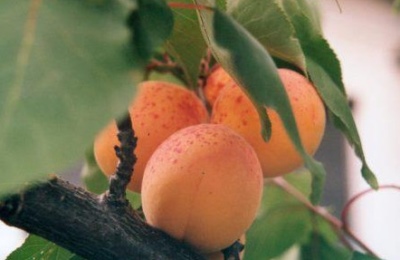
- Tree height, m: 2
- Flowers: white
- Fruit weight, g: 15-20
- Fruit shape: round
- Skin : thin
- Fruit color: bright orange with blush
- Pulp color : yellow
- Pulp (consistency): juicy
- Fruit taste: sweet, sour
- Separability of the bone from the pulp: good
Thanks to breeders, the geography of growth of such thermophilic fruit crops as apricot has expanded significantly. It is now possible to plant apricot trees in server regions. A popular frost-resistant variety is the Snegirek apricot.
Description of the variety
Apricot Snegirek is a low-growing tree, endowed with a rounded crown with medium foliage, rich green leaves. The apricot is characterized by a dense brown bark with many grooves, upright reddish shoots, and a strong root system. Under favorable conditions, an apricot tree grows to a height of 150-200 cm. The life cycle of a tree is 30 years, of which 25 it bears fruit.
The flowering period for fruit crops begins in the second half of May. At this time, the neat crown looks very attractive and decorative, since it is simply strewn with medium five-petal flowers of a snow-white color.
Fruit characteristics
Snegirek is a small-fruited species. An adult tree grows fruits weighing up to 20 grams. The shape of the apricots is correct - rounded with a velvety surface. At the stage of absolute ripeness, the fruits are colored in an orange-cream color, diluted with a rich blush that covers half of the apricot surface. The skin of the fruit is thin, but firm, with a short, barely noticeable edge. The abdominal suture is strongly pronounced, visually dividing the apricot into two parts. The fruit is kept on a short and thickened stalk. The flat bone is easily separated from the pulp.
You can cook compotes, jams, preserves from Snegirek apricots, eat them fresh, use them in cooking, freeze and dry. Fruit transportability is good. At a temperature of +10, the fruits can be stored in wooden boxes for about 4 weeks.
Taste qualities
The fruit tastes excellent. The yellow-orange pulp has a delicate, fleshy, very juicy consistency. The taste is dominated by sweetness, even a slight sweetness is felt. A slight bitterness can be traced in the pulp closer to the skin. The aroma of the fruits is bright, dessert, which is extremely rare in cold-resistant varieties.
Ripening and fruiting
An early ripe apricot begins to bear fruit 4-5 years after planting. Fruiting at the tree is stable - annual. You can taste the first ripe apricots in mid-July. The peak of fruiting occurs in late July - early August and lasts for 7-10 days.

Yield
Despite its short stature and diminutiveness, the tree gives a good harvest. On average, properly caring for the crop, you can collect up to 15 kg of fruits per season. The first harvest year will be weaker - up to 7-8 kg of ripe fruits.
Self-fertility and the need for pollinators
Fruit and stone fruit culture Snegirek is self-fertile, but with the help of additional cross-pollination, it is possible to significantly increase productivity indicators. For this, donor trees with similar flowering periods are planted on the site. For the apricot Snegirek, the Northern Triumph, Russian and Krasnoshekiy will become effective pollinating trees.
Growing and care
It is better to plant an apricot seedling in the spring - in April, when the growing season has not begun, but the soil has thawed, the air has warmed up. An annual seedling with a developed root system takes root best. Landing is carried out in dry and calm weather. The best neighbors for the Snegirek apricot will be early flowers, for example, tulips or daffodils.
Despite the unpretentiousness, the tree still needs basic care - regular watering (twice a week), fertilization (three times per season), crown formation, sanitary pruning of branches, loosening and weeding of the soil, prevention of diseases, mulching, preparation for frost, and also protection against rodents, by installing a fine-grained metal mesh. Anti-aging pruning will help prolong the life of the tree.



Disease and pest resistance
Apricot is characterized by a good immune system that protects against many fungi. It is extremely rare, when the summer is rainy, there is a lot of moisture, the tree suffers from moniliosis and brown leaf spot. Among the harmful insects attacking Snegirek, the most frequent are weevils, plum sawflies, leaf rollers, moths and fruit striped moth. Insecticide treatments will help get rid of pests.

Winter hardiness and the need for shelter
Snegirek is endowed with excellent frost resistance, therefore it easily survives cold snaps down to -35-40 degrees. This durability is due to the thick bark of the tree. In severe frost or cold winters with little snow cover, it is recommended to insulate young trees (at the age of 2-3 years) - wrap them in burlap, and also spread a thick layer of mulch.
Location and soil requirement
For comfortable growth, a tree will need a suitable place - a flat, weed-free area, with nutritious, loose, drainage, breathing soil, which has a neutral acidity index. The occurrence of groundwater must be deep, since stagnant water can destroy the root system of the tree.
Since the apricot loves warmth and light, it is recommended to choose a sunny site, protected from the north wind and draft.































































